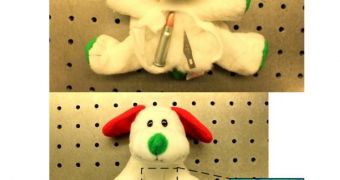The two electromagnetic frequency bands used most today are the 2.4 GHz and the 5 GHz. Caltech may have pulled one over the entire wireless community though, with its newest chips. The 2.4 GHz frequency band is the most common for Wi-Fi networks, but the 5 GHz band allows for faster transfers.
Some companies have begun selling dual-band routers that offer the best of both worlds, although the extra prices is a bit of a drawback.
None of this matters to the latest milestone from Caltech. Its researchers have managed to create a chip that can reach the terahertz band.
A silicon microchip generates high-frequency electromagnetic waves similar to x-rays, capable of penetrating certain materials.
X-rays normally ionize the matter they pass through, but this does not apply here, which makes the terahertz chip quite safe.
As such, there are many benefits that Caltech has just made possible, from homeland security and surveillance to health care, wireless communications, touch-less gaming, etc.
A bonus is that the silicon is actually cheap to manufacture, which means it should be convenient to add to all mobile phones, notepads, high-speed sensors, etc.
Previously, there was no inexpensive method to build the processors and make them compact enough for commercial viability. Utilizing CMOS technology helped here.
“Using the same low-cost, integrated-circuit technology that’s used to make the microchips found in our cell phones and notepads today, we have made a silicon chip that can operate at nearly 300 times their speed. These chips will enable a new generation of extremely versatile sensors,” said Thomas G. Myers, professor of electrical engineering at Caltech Ali Hajimiri.
Caltech should be able to secure some contracts for its chip, whenever it gets it past prototype stage, but mass availability of terahertz processors probably won't be possible until some sort of standard is developed for them, which could take years.

 14 DAY TRIAL //
14 DAY TRIAL //